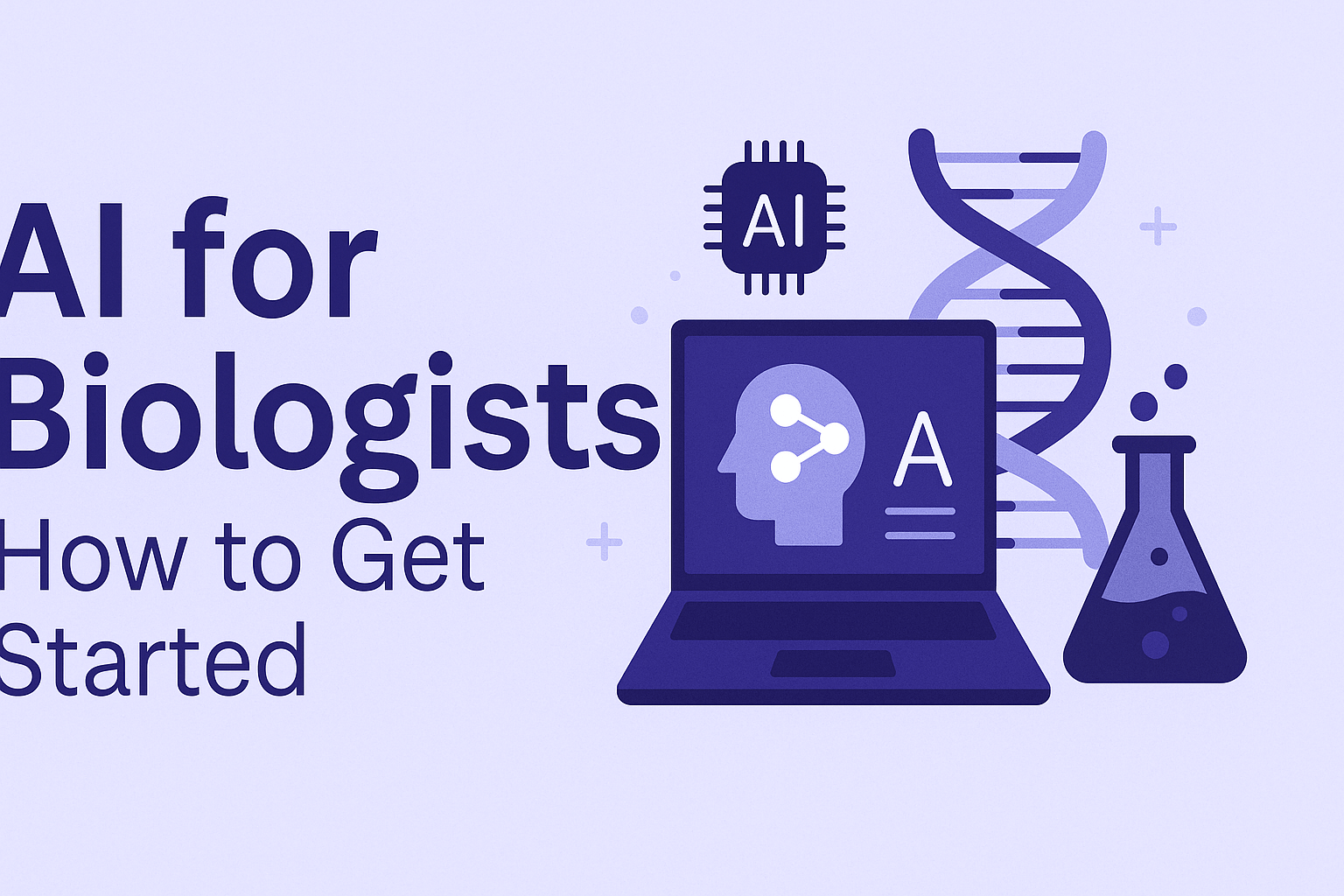Struggling to understand what AI has to do with your lab work? You’re not alone — and you’re not too late.
Let’s Be Honest: AI Sounds Complicated
As a biology student or researcher, you’ve probably seen phrases like “machine learning for protein prediction” or “AI in drug discovery” floating around — and thought,
“Sounds cool. But I have no idea where to begin.”
And that’s exactly what this blog is here for.

What Even Is AI for Biologists?
At its core, AI (Artificial Intelligence) just means using machines to spot patterns and make decisions — faster than humans could.
In biology, this could mean:
- Predicting gene function from DNA sequences
- Modeling protein folding
- Classifying cell types in microscopy images
- Screening drug candidates based on molecule structure
Notice something? These are real problems that you already deal with — AI just helps speed them up.
“Do I Need to Code?”
Not at first.
Today, there are no-code and low-code tools built for biologists. Some popular ones:
- DeepCell, for image analysis
- GenePattern, for genomics workflows
- Google AutoML, for custom models
- Even Excel + AI plugins if you’re just starting out
The best part? You can learn these while still doing wet lab work.
Real-World Use Case (That Might Surprise You)
A PhD friend of mine in immunology trained a basic AI model to detect cancer cell subtypes in blood smear images — using a Google Colab notebook. No deep CS background. Just curiosity and access to open datasets.
Now her paper is under review in a major journal.
Where Should You Start?
Here’s a quick 3-step starter plan:
1. Learn the Language
Start with basics:
What is machine learning? What is a model? What is a neural network?
👉 YouTube Channels: StatQuest, Biopractify, 3Blue1Brown,
👉 Courses: AI for Biologists — Learn, Build, Apply
2. Try a Tool
Pick one no-code tool and test it with a dataset:
- Try uploading gene expression data on GenePattern
- Run a simple prediction task on Teachable Machine
3. Solve a Mini Problem
Use AI to solve one small thing in your current bio work. Could be predicting enzyme activity or classifying plant species by leaf image.
Final Thoughts
AI isn’t here to replace biologists. It’s here to upgrade us.
You don’t need to become a data scientist overnight. You just need to take the first step — and trust that your biology background already gives you the scientific mindset to ask great questions.
Ready to explore more?
📩 I’m sharing weekly tips & insights on AI in life sciences on my Biopractify blog. Follow along and start experimenting.


Leave a Reply